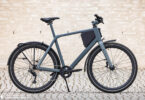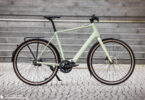The new VW ID.BUZZ – hotly anticipated by campers, VW bus fans, parents, and businesspeople. It’s a charming and futuristic homage to the T1, but can it deliver technically? We drove it 4,000 km across Europe to find out where it excels and where it doesn’t!
You can find all electric Cars in our big EV special “Which is the best electric car of 2023?“, where you can also check out our personal EV buyer’s guide – free of charge!

Whether business, crafts, or travel, the VW bus has won everyone’s hearts across generations. It has shaped the world’s streetscapes for decades, though it has gradually lost some of its charm due to numerous model innovations and facelifts over the years. The all-new ID.BUZZ now picks up the friendly look of the original once more and transports it into the modern era. Like all ID models, the BUZZ is based on VW’s modular MEB drive system. This versatile modular platform can be combined with almost any body, which promises cost savings and greater freedom in the design of the models. The ID.BUZZ Pro is available from € 64,500, with the Cargo version starting from € 56,000. We tested the short wheelbase ID.BUZZ Pro for € 81,371, with a wide range of features. That means it’s about the same length as a VW Caddy Maxi, with a long wheelbase version expected to arrive later in 2023.
A style icon from hour zero – The design language of the new VW ID.BUZZ
Sorry to all Porsche, Ferrari, Lamborghini, and Beetle drivers! The ID.BUZZ steals the show and is already a design icon. Driving around, it’s met with smiles, a lot of thumbs up, and it gets photographed at every corner. When the ID.BUZZ was presented at the IAA in 2017, it struck like a meteor. Apart from the side cameras that didn’t make it into production, hardly anything has changed externally, adopting the original design concept almost entirely. The design language and colour schemes are deliberately based on the original VW microbus. Like the legendary Samba bus, our test vehicle features a two-tone livery, which costs an additional € 2,725.10. It’s available in many modern and trendy colours, like the Candy White/Energetic Orange Metallic you can see here. If you want something more subtle, you can also choose from many monotone colour options. Iconic design elements like the rounded bonnet and huge VW badge have been carried over to the modern age, supplemented with friendly headlights and a continuous light strip at the front and rear. The fact that the design is appealing is confirmed by 10,000 pre-orders – that’s without even having taken it for a test drive. Read on to find out how courageous (or perhaps premature) placing these pre-orders was.

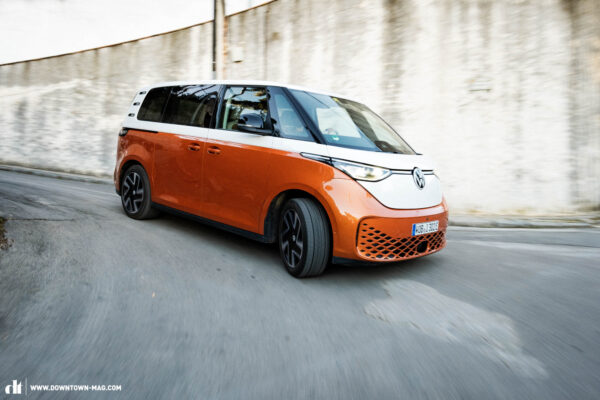
Claustrophobic or roomy? – The interior of the VW ID.BUZZ Pro
Compared to the Hybrid T7, measuring 4.97 m, the ID.BUZZ is almost 30 cm shorter, but 4 cm taller. The interior of the ID.BUZZ takes advantage of the reduced space needed by the electric drive system and, in combination with the large windscreen and the deep dashboard, provides a roomy feeling in the front seats. The large dashboard can even be used as a desk, easily big enough for a laptop. There are 3 USB-C charging ports on board as standard with a 45-Watt output, which is enough to charge a laptop. If you want to plug in more devices, you can get up to 8 USB-C ports, or even a 230 V socket at an additional charge. There’s a deep inductive charging compartment for your smartphone next to the steering wheel. Unfortunately, the phone gets very hot, and our Apple CarPlay stopped responding more than once (at an outside temperature of 10°). To be fair, we’ve experienced this with other EVs in the past.
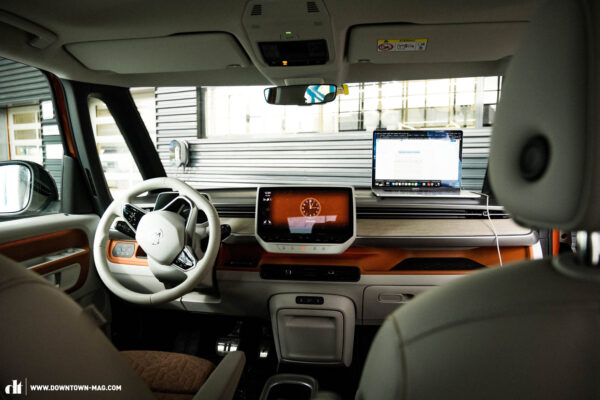

The interior is neatly finished, though it’s a mostly plastic landscape. On the other hand, it’s cool that the two-tone paint job is carried over to the interior, with the door panels and parts of the dashboard and seats alternating in orange and white. The model on test is equipped with the Interior Style Plus package, including an extensive range of comfort features such as electric seat adjustment with a memory function, entry assist for the driver’s seat, heated front seats, and pneumatic lumbar support. There’s a generously sized storage box between the front seats, which can easily be removed to give you access to the rear.
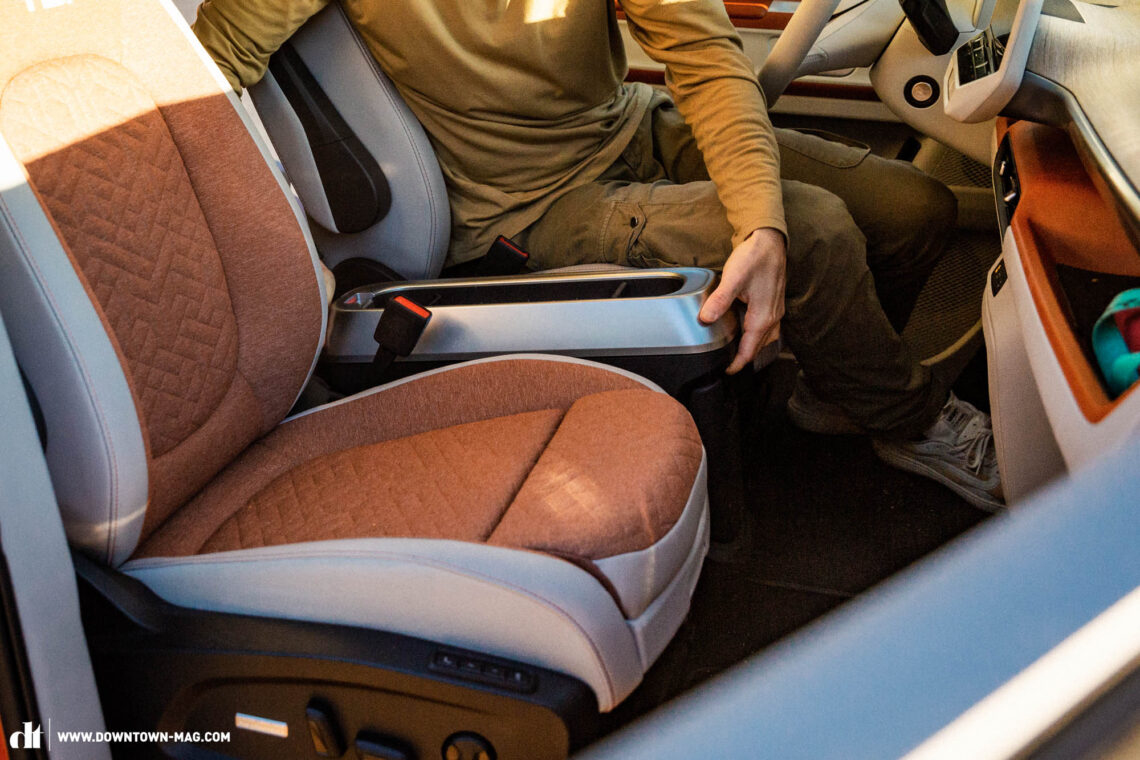
The rear bench offers space for up to 3 passengers with enough leg and headroom for larger folks. Easy entry is ensured thanks to dual sliding doors. To avoid pulling any muscles, there’s an optional extra that lets you open the doors electrically at the push of a button on the B-pillar.
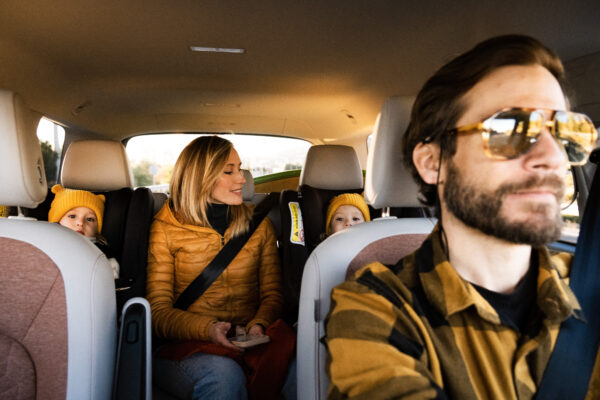
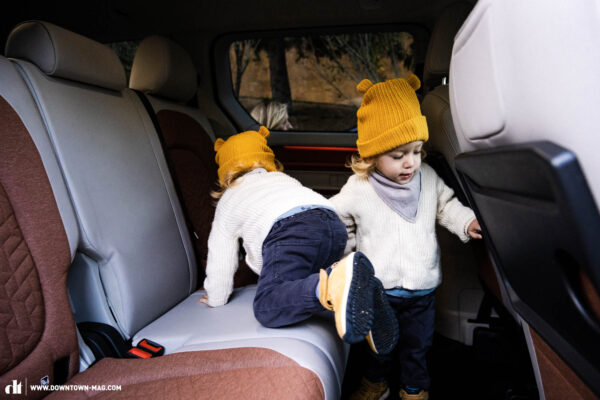
You can get a so-called Multiflexboard for the large 1,121 litre trunk, which divides the storage space like a set of shelves. It extends all the way to the rear seats, allowing you to store an astonishing number of different items. Unfortunately, the bottom section is too low for most bags, but VW offer adequately sized foldable boxes which you can use to store the charging cable, for example. The Multiflexboard also serves to create a flat surface that’s flush with the seats when they’re folded down, perfect for camping in your vehicle. That’s a good thing, since camping fans will have to wait until 2025 for the ID.BUZZ California.
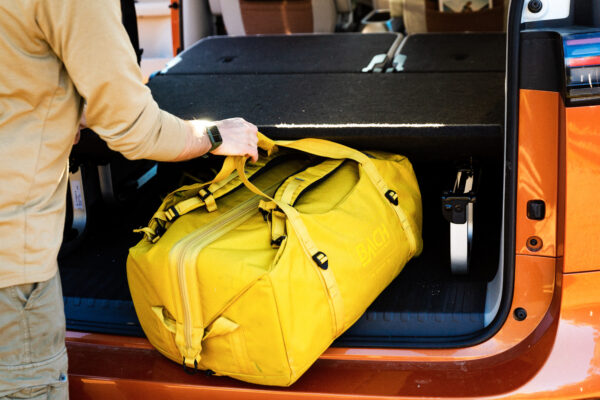

If you’re packing for a camping trip, the luggage compartment provides 2,123 litres of storage space with the seats folded down. For comparison, a T7 offers a whopping 3,672 litres. You’ll be able to fit a surfboard without folding down the rear seats, but you can forget about parking a motocross bike or an eMTB upright in the bus. Due to the batteries in the chassis, the ID.BUZZ has about 14 cm less headroom than conventional combustion engine models. In contrast to most other EVs, the ID.BUZZ can be fitted with a towbar for an extra € 981, allowing you to tow loads of up to 1,000 kg.
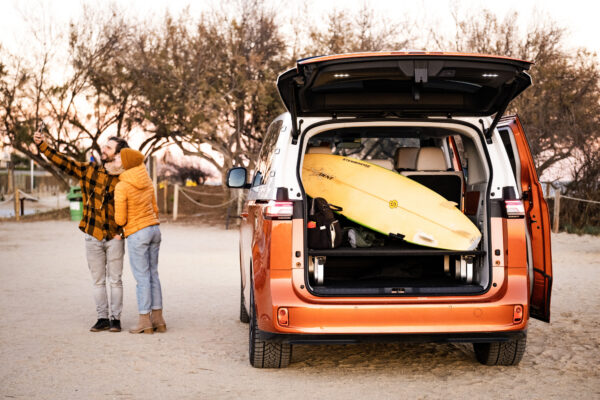

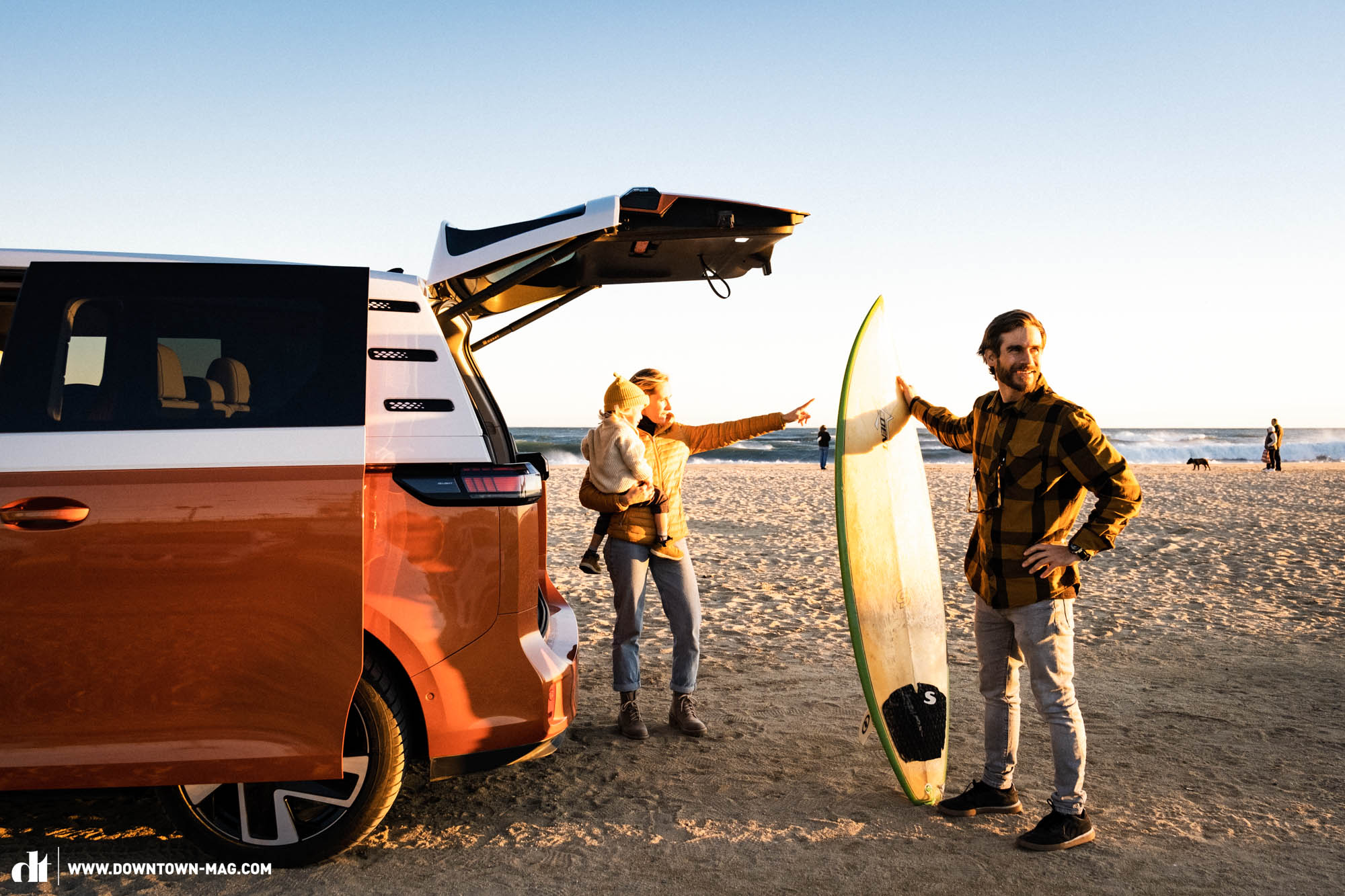
The BUZZ has lost some of the functionality and universality of the combustion powered microbus. as it’s limited in terms of loading capacity and thus suitability for certain hobbies. The added value of the VW bus has always been that you didn’t have to leave your expensive bike outside on a rear carrier, where it isn’t just exposed to the elements, but also to potential thieves. Due to the reduced headroom, you’ll have to remove the front wheel, and since the floor of the trunk is higher up, it also means you’ll have to lift your heavy ebike higher to get it in.
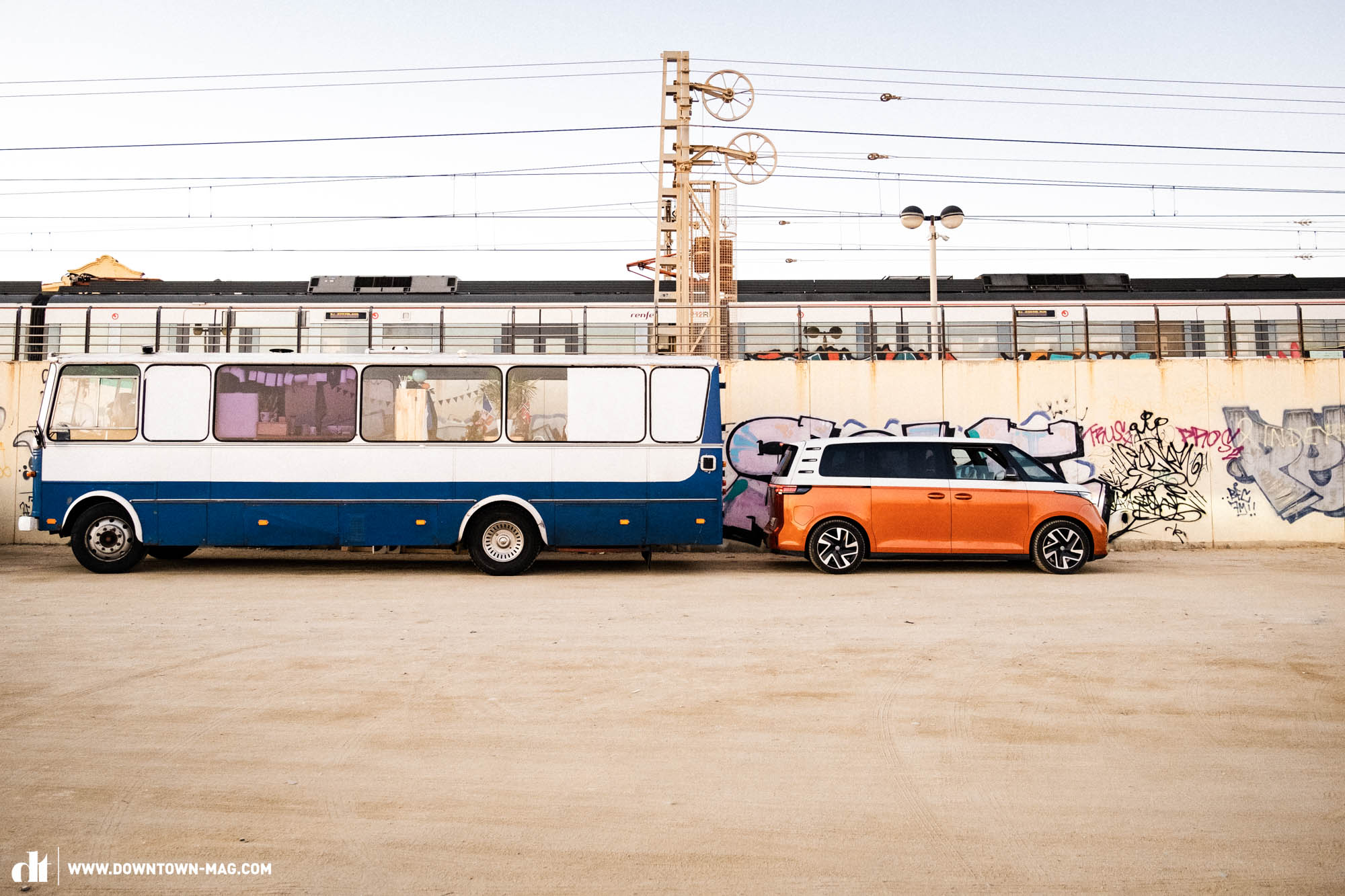
As smart as Einstein – The driver assist functions of the VW ID.BUZZ Pro
By now, driver assist functions are standard in most new cars, but that’s not to say they’re all equally functional and reliable. However, we’ve already seen that the German automobile giants feature smart helpers that offer real added value. But can the ID.BUZZ top that? Our test vehicle features the € 2,445 Assistance Plus package, which includes Adaptive Cruise Control a.k.a. Travel Assist, Lane Keep and Change Assist, Emergency Assist, Park Assist, as well as 360° and rear-view cameras. If you’re on your way to kindergarten in the morning, the children’s bickering won’t trouble the driver: the Travel Assist reliably maintains the distance to the vehicle ahead, even through corners with limited visibility, while also distinguishing between trucks, cars, and two-wheeled vehicles. In stop & go traffic, the BUZZ stops automatically and then continues autonomously. If you overlook a sign, the Travel Assist acts as your third eye and recognises speed limits – even ones that only apply during certain times of day – gently but quickly adjusting the speed accordingly and keeping it constant on downhills. Unfortunately, the sign recognition doesn’t always work reliably and occasionally responds to signs on the highway that are only applicable to slip roads. This leads to abrupt and unpleasant braking on the highway, for no apparent reason according to the vehicles behind you. When the navigation system is activated, the BUZZ adapts to upcoming features, braking before roundabouts or intersections. The assistant is very careful and slows down significantly in certain situations where you could drive faster, especially on motorways with long corners.
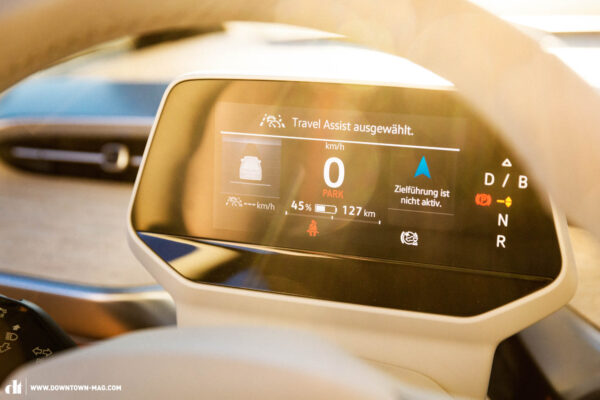


Based on map information about road markings, and road sign data collected by other Volkswagen vehicles, the Lane Keep Assist also works on roads with poor or unclear markings. Modern cars are edging ever closer to fully autonomous driving, yet the responsibility currently remains with the driver, and you must always keep your hands on the steering wheel. The sensors on the BUZZ don’t always recognise whether you’ve got your hands on the steering wheel, especially on long straights, so it often prompts the driver to grab the steering wheel to confirm that they’ve still got the vehicle under control. If you ignore the prompts, the first thing you hear are acoustic and visual warnings via the Lightbar, followed by slight braking, then harder braking and tensioning the safety belt, which pulls you briefly but firmly into the seat – that should wake you up. So, the BUZZ remains persistent and doesn’t just switch off the assist functions like some other vehicles. If you arrive back at home after a long day, parking can be handed over to the AI. Thanks to the memory function, you can teach the Park Assist different parking manoeuvres, which it can then repeat automatically, which is especially convenient in your home garage. When manoeuvring or parking manually, the 360° and rear-view cameras provide a good overview so you always know what is happening next to and behind the car.

Testing the VW ID.BUZZ Pro – How does the bus fare on everything from camping adventures to everyday life?
The ID.BUZZ puts a smile on the faces of everyone it meets on the road, but does it make the driver smile, too? The keys specs sound sporty, with its motor in the rear, rear-wheel drive, and 150 kW output – if only it didn’t weigh almost 2.5 tonnes. Nevertheless, it has that typical electric car punch, which makes it feel sporty and is especially helpful when overtaking or trying to merge with another lane. As for sound, the BUZZ is quiet and unobtrusive on the inside and, from the outside, produces a fairly loud hum, matching the size of the car.

The gear selector behind the steering wheel is more visible than in the VW ID.3. It lets you select the different driving modes: Drive, Reverse, and Neutral. In addition to the standard Drive mode, you can also select Brake mode, which, as the name suggests, initiates regenerative braking as soon as you take your foot off the accelerator. In this mode, the BUZZ will brake until it comes to a standstill, and you can drive it comfortably with one-pedal once you’re used to it. You can select from a range of pre-configured driving modes such as Eco, Comfort and Sport via the main display in the centre of the dashboard. The Custom mode lets you create and save the driving mode to suit your own preferences. Driving in the city, you benefit from a small turning circle of just 11.1 metres. That’s just 1 metre more than the VW ID.3, and 2 metres more than the Smart Forfour. Overall, the BUZZ offers a good overview of your surroundings due to its many windows, which is especially helpful in the narrow streets of Barrio Gotico in Barcelona, or any other small town with narrow alleys. Only the deep dashboard makes it slightly difficult to judge where the front of the vehicle ends, and you must crane your neck to look up out of the front window when sightseeing or at traffic lights. The large sides of the ID.BUZZ offer a big surface for the wind to blow against, which leads to somewhat restless handling and is especially noticeable when driving on windy motorways near the coast.
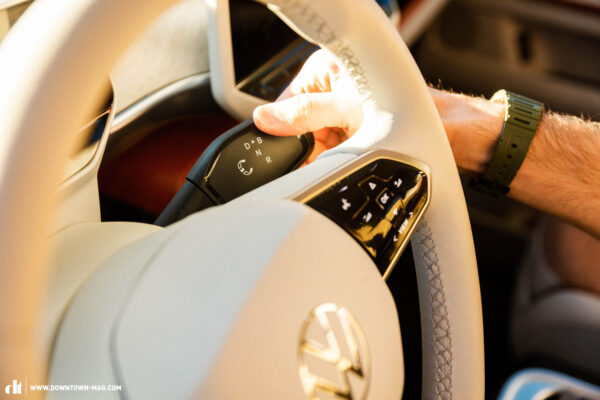
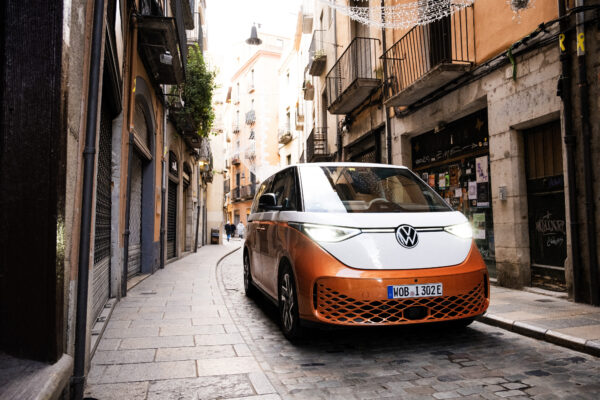
Highs and lows – Charging, charging power and battery consumption of the ID.BUZZ Pro
A VW bus sounds like freedom, right? It’s made for travel, isn’t it? That’s what you would assume, even in the case of the ID.BUZZ Pro, but the reality looks a bit different. You’ll need to adopt the right mindset before going on a road trip with it. That’s exactly what we tried – 4,000 km with all our camping equipment, a roof tent, and a rack for our ebikes. From Germany to Provence, past fishing villages and wild herbs, across the Pyrenees through ice and snow, to the beaches of Barcelona to soak up the sun. With temperatures ranging from -5° to 20° C, and our tempers from joyful to frustrated, we experienced it all. In hindsight, we had a great time, even if it sometimes felt annoying at the time.
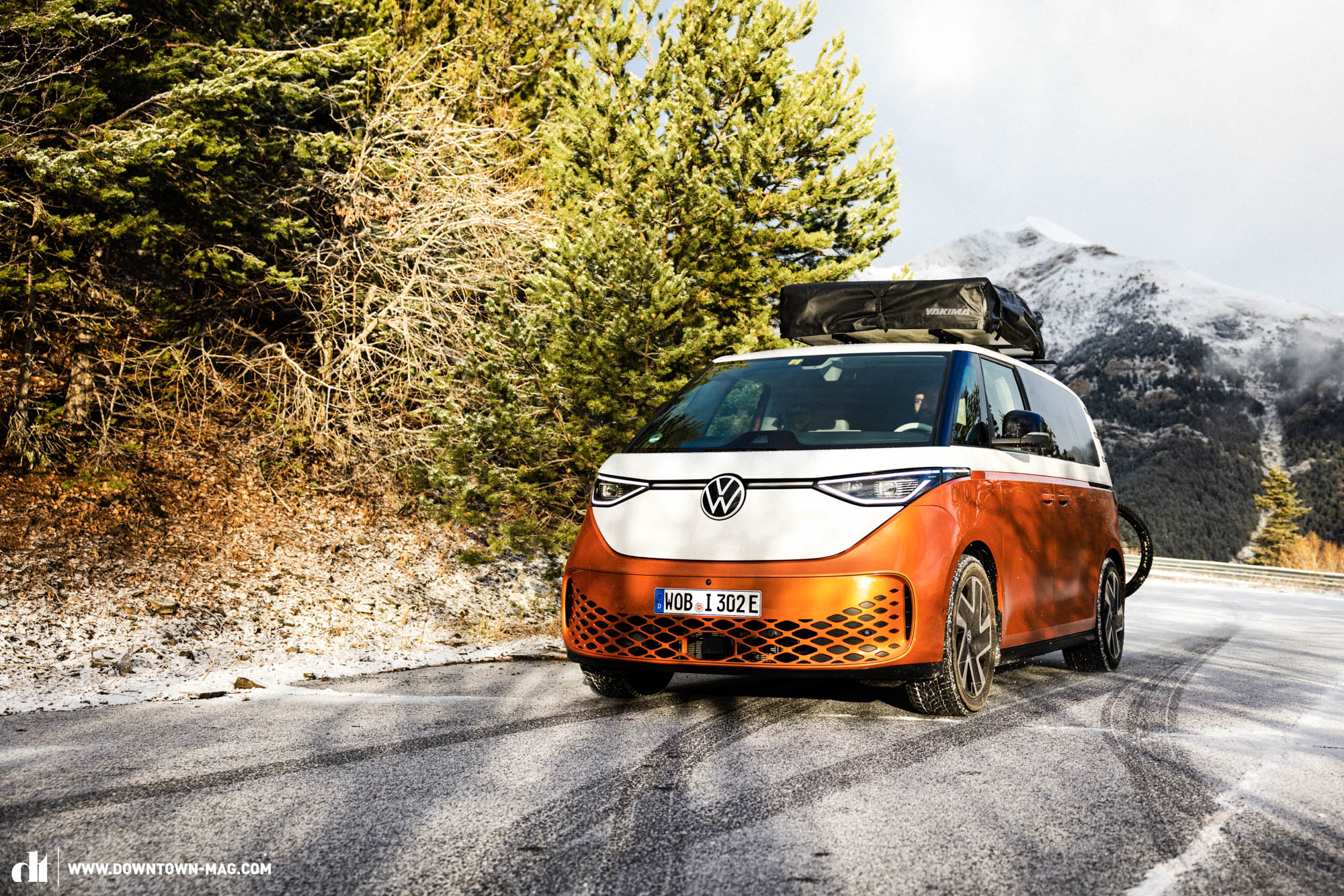
According to the manufacturer, the WLTP measured range is between 402 and 423 km, but disillusionment soon set in as we achieved an average of 200 km between charges, travelling at an average speed of 120 kph. That would occasionally go up to 300 km without the roof tent – it must be said that the range depends on countless variables like your speed, wind resistance, and outside temperature. On the highway, we were forced to make a +/- 1 hour charging stop every 1.5 hours. The charging speed depends on the charging infrastructure. Although the BUZZ theoretically permits a maximum charging power of 170 kW, this was hardly ever the case in practice. Charging is like playing the lottery, you never know how long it will take, especially not outside of Germany. You can go to the same charging station with the same state of charge and charge at 170 kW on one day and just 50 kW on a different day. In the best case, the charging station will get the battery from 20 to 80% in 30 minutes. For a full charge, you will have to wait about an hour.
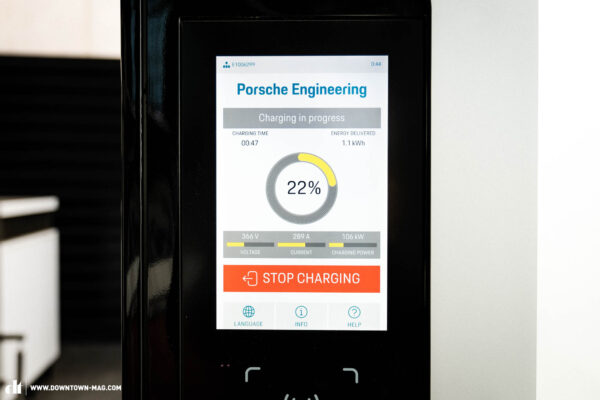
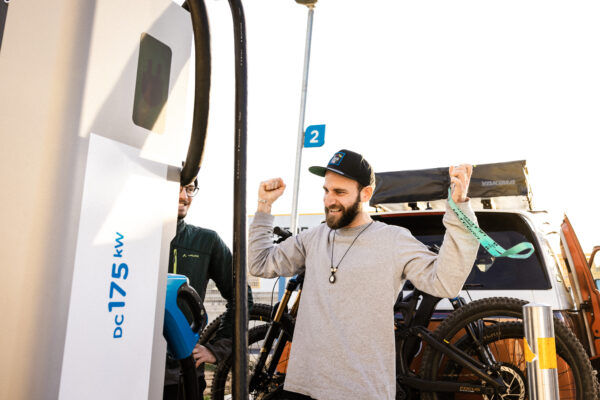

While you wait, you can also play with the 12″ touch display, which is mounted centrally in the dashboard. It’s here that you can adjust almost all the settings of the VW ID.BUZZ. As with the ID.3, there is a quick menu that’s cleverly arranged like a mind map, giving you POIs, such as charging stations or recently selected destinations. You can enter your destination for the sat nav via the touch display or by voice input, and the software automatically inserts charging stops including an adjusted arrival time for longer trips. Unfortunately, the calculated travel time never works out because the system makes its calculations using optimum values, not realistic values. As such, long journeys will always be longer than expected, and the BUZZ doesn’t tell you whether the battery has got enough charge to reach the next charging stop. For better visibility for the driver, the map can also be displayed on the digital speedometer. Even though you control most of the functions via the large touch display, there is a good mix of analogue buttons and touch interfaces. The air con, volume, and driving modes can be controlled both by pressing or just swiping over the buttons. The multifunction steering wheel lets you control the volume or Travel Assist, the buttons of which you can also press or touch.
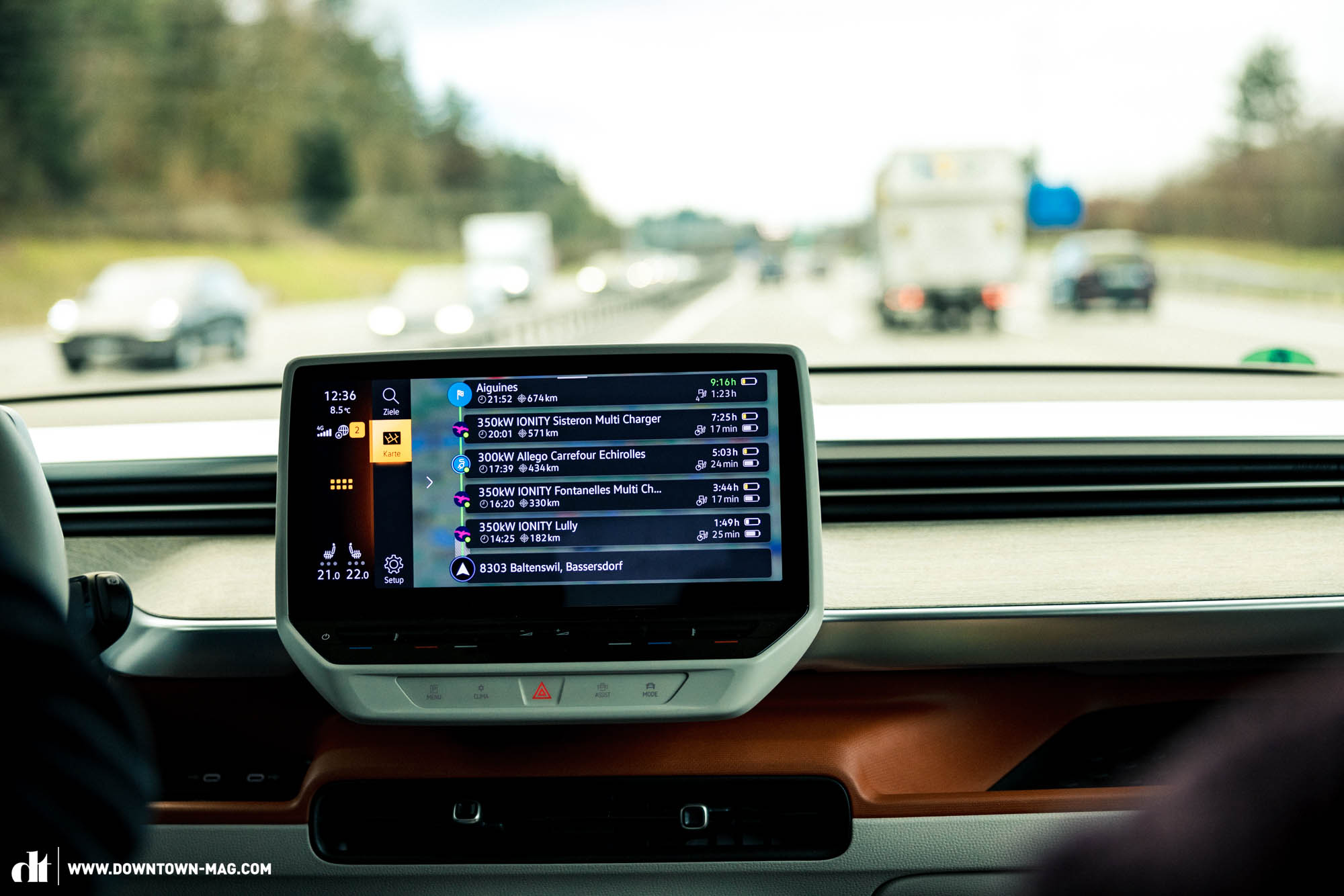
Due to its range, charging speed, and navigation, the ID.BUZZ is only partially suitable for long distances. You can’t just drive through the night when you’re in a hurry to get somewhere. The electric VW bus requires a lot of patience on medium to long distances. You must be willing and mentally prepared for slow travel. If so, you’ll be rewarded with a very special trip that you’ll remember for a long time to come, full of extraordinary stops, new encounters, and time to reflect. If you want to use the BUZZ as a long-distance vehicle, you will need nerves of steel and well-planned routes that take the realistic range and charging time into account. This may be a no-go for speed enthusiasts and trip planners on a tight schedule, but isn’t that what makes the true van-life and a perfect road trip what it is? At the current stage of development, the VW ID.BUZZ is more of a likeable MPV for the suburbs, which turns heads, generates smiles, and generally has a positive image.
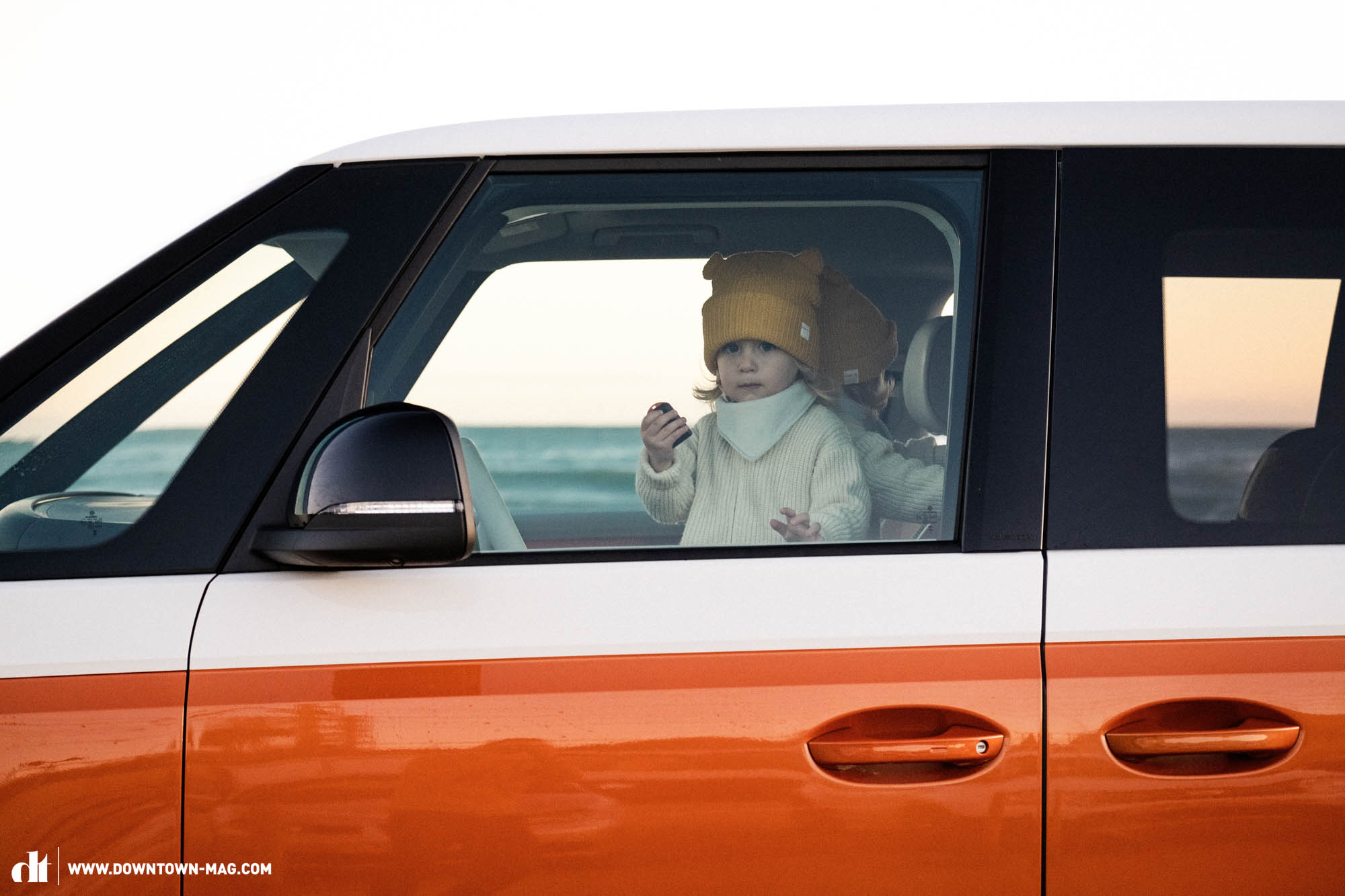
Our conclusion on the VW ID.BUZZ Pro
You won’t get this much positive feedback even with an old-timer. The ID.BUZZ combines nostalgia with the promise of the future both visually and emotionally, and it delights us with its charming looks. Unfortunately, it has lost some of its (transport) functionality and is only suitable for long distances if you’ve got the time and patience. Its cargo carrying capacity isn’t amazing, but it’s super agile in the city and the assist functions work well. We had our ups and downs – ultimately, it’s up to you to decide whether it’s worth the asking price of at least € 64,500.
For more information, visit volkswagen.com
Tops
- cool and likeable design
- agile and quick handling
- spacious feeling interior
Flops
- only suitable for longer distances to a limited extent
- a lot of plastic in the interior
- loses functionality
- charging intelligence and speed could be improved
All tested e-cars: City Transformer Prototyp | Fiat 500e | Honda e | KIA EV6 | Opel Rocks E | Polestar 2 | Porsche Taycan | Smart EQ Forfour | Tesla Model 3 Dual Motor Long Range | VW ID.3 | VW ID.BUZZ
Words: Mike Hunger, Julian Schwede Photos: Mike Hunger, Robin Schmitt





